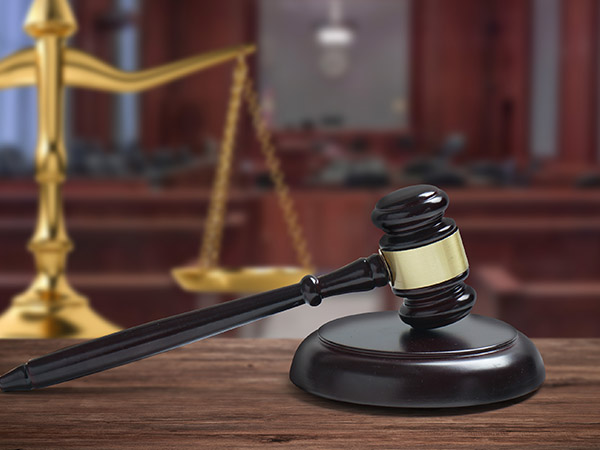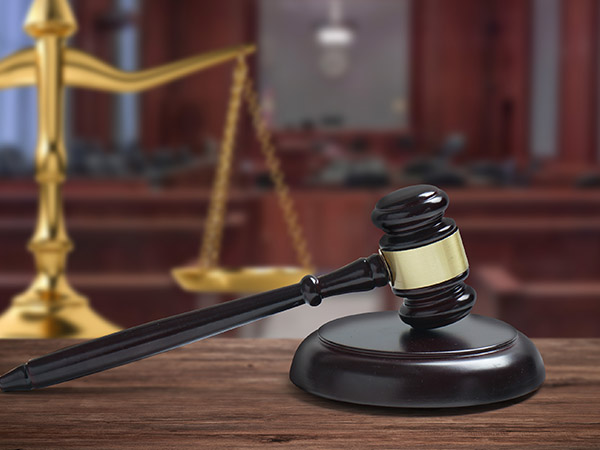2.The estoppel limitation on the application of the Doctrine The estoppel is a limitation on the application of the Doctrine of Equivalent. It basically means that in patent examination process, what has been given up by the applicant, in order to distinguish from the prior art, may not be recaptured as protective scope later on in the infringement suit by way of equivalency. The estoppel is closely related to the examination process as every applicant would hope to get as broad a claim as possible while the examiner would require the applicant to make it as narrow as possible to avoid prior art. In patent application and examination practices, the patent office may require an applicant to make amendments to the application specification for various reasons: some to avoid prior arts so that the application may be approved; others may have nothing to do with prior arts, or with the ultimate patentability issues. In other words, what is abandoned in the claims must be related to prior art or to obviousness to be applicable for the estoppel. Of court, the burden of proof for the reason for such amendment of the claims is on the patentee, and then the court may consider whether he would be estopped from asserting the Doctrine. If the patentee cannot explain why the amendment, the court will have to presume the amendment was made to avoid prior art, in order to be patentable. Under such circumstances, the estoppel will be applied to limit the application of the Doctrine of Equivalents.
Article 6 of the Interpretation of Several Issues of Application of Laws in the Trial of Patent Disputes (FaShi[2009] No. 21) of the Supreme
People's Court provides that the People's Court shall not sustain attempts to recapture a technical solution into patent protective scope in p atent infringement disputes which a patent applicant during application or a patentee during invalidation proceedings has been abandoned by making amendments to the claims or the written description, or by making a statement of opinions. This is what is called the "Estoppel," which is applicable on conditions that (1) the limitation or abandonment made to the pertinent technical feature b y the p atentee must express, and has been recorded in the patent specification, an effective invalidation decision, or a judicial review decision; (2) the technical contents of limiting promise or abandonment of protection must have an substantive impact on approval or validation of patent. In Aonuo Pha rmaceuticals v. Wushi Co. , e.g., the Supreme People's Court indicated that the amendment made by the patent application can be seen from the patent examination documents as in response to the examiner's rejection of the published version of the claims as indefinite because they were not supported by the written description; the technical features in the accused device corresponded to those abandoned by the patentee in the application process, and may not be recaptured as equivalent to what was claimed in claim 1 for patent protection. But in Zhong Yu Co. v. Jiu Ying Co. of utility model patent dispute, the Supreme People's Court pointed out that the estoppel generally applied where the patentee abandons a technical solution by amendment or statement; where an independent claim is invalidated, and a patent is sustained by upholding a dependent claim therefrom, and the patentee never voluntarily abandons, it would inappropriate to apply the estoppel on basis of the dependent claim, and then limit the use of the Doctrine.
Shen Qiheng v. Shanghai Sheng Mao Traffic Equipment Engineering Co. , a patent utility model infringement case, is a typical example of applying estoppel to the Doctrine of Equivalents, in which claim 1 of the patent is: "An automobile parking lock, comp rising wherein a base, a locking axis, a movable stake, and a locking device, said base being fixed to the ground, said movable stake, having a lock intake, and being connected to said base by said locking axis." The parties disputed over the interpretation of the "movable stake, having a lock intake" limitation. According to the patent specification itself, the Patent Reexamination Board decision in invalidation proceedings and the ensuing judicial review decision, as well as patentee's statement in relevant proceedings, the limitation as recorded in claim 1 refers to "a locking device not permanent fixed in the intake, but having two modes of joint based on use, i.e., the locking device being inside the intake when locked, and taken out from the intake of the movable stake when unlocked." Whereas, the locking device of the accused device is permanently fixed to the base, for which the device is locked, the lock tongue is engaged into a hole on the -shaped arm, thereby connecting to the base.
The court of first instance trying the infringement case found that the technical feature of the accused device to be different from the " movable stake, having a lock intake." Even if the aforesaid feature may be taken, Shen Qiheng should be estopped from asserting it as equivalent for patent infringement because of his statement in the judicial review at Beijing First Intermediate Court that "movable stake having a lock intake" referred to a lock, not permanently fixed in the intake; rather it has two modes of joint, i.e., to be locked when placed inside the intake, and to be unlocked when displaced from the intake, separating it from the movable intake, which statement having been confirmed by Beijing First Intermediate Court, Beijing High Court, and the Patent Reexamination Board, affirming claim 1 as having novelty and nonobviousness.
The court of second instance in the trial of patent infringement held in relation to the estoppel, that the correct understanding of the court of first instance should be "… even if the aforesaid technical feature may be accepted …, plaintiff may not assert infringement based on equivalency because of the estoppel." Judged from the above statement and the first instance d ec is ion as a w hole, the fir s t instance court merely indicated a hypothetical and the legal consequences, which did not create a scenario for the application of the Doctrine, or depriving appellant of his rights by applying the estoppel. Moreover, a court in finding for infringement b y equivalency, ought to make an ex officio determination based on facts as to whether the estoppel and confine the equivalency to appropriate limitations.
In the reconsideration trial, the Supreme People's Court pointed out that the estoppel was a limitation on the Doctrine of Equivalents. The current statutory laws and judicial interpretations do not touch upon sua sponte application of the Doctrine, for the same reason, courts should not be prevented from voluntary application of the estoppel for the sake of balancing the interests between the patentee, an d the accused infringer as well as the public in general . For this reason, in determining infringement by equivalency, even when the accused infringer does not bring it up, the people's courts may still, based the facts of the record, apply the estoppel as appropriate limitation on the scope of the Doctrine, so as to ascertain fair and reasonable scope of patent protection.
3. Application of prior art limitation In applying the Doctrine of Equivalents, the patent protection may not reach what is in the prior art. This is because what is in the prior art may not appropriated as one's own patentable invention; neither will the patent authorities confer such rights on a patent claim.The limitation of the Doctrine by prior art is in fact a hypothetical, which is to make a comparison of the technical solutions in the accused device with what is in the prior art. If the former cannot satisfy patentability conditions, it is then in the prior art, and the patent cannot be infringed; if, however, the technical solutions in the accused device can be patentable, it is then not in the prior art, hence the patent is infringed. Article 62 of the current Patent Law provides that in p ate n t infringement disputes, patent infringement cannot be found where the accused infringer establishes by evidence that he is practicing the prior art. The Supreme People's Court further defined "practicing prior art" in Article 14 of the Interpretation on Some Issues Concerning the Application of Laws in the Trial of Patent Infringement Disputes (FaShi [2009] No. 21), as where all the elements corresponding to what is covered by a patent claim wherein at least one element is identical with or substantially indistinguishable from an element in the prior art, the people's court find the accused infringer as practicing the prior art, as provided under Article 62 of the Patent Law. This judicial interpretation elaborates two scenarios of practicing the prior art: one the technical solution in the accused device being identical with what is in the prior art; two it being insubstantially different from what is in the prior art, either one of which negates equivalency. Thus, in patent infringement litigation, even if the technical solution in the accused device is an equivalent to what is recorded in the patent claim, it may not be considered by court as a patentable equivalent based on the evidence provided by defendant to show that one of the elements is in the prior art, nor shall the patent be found to have been infringed.










